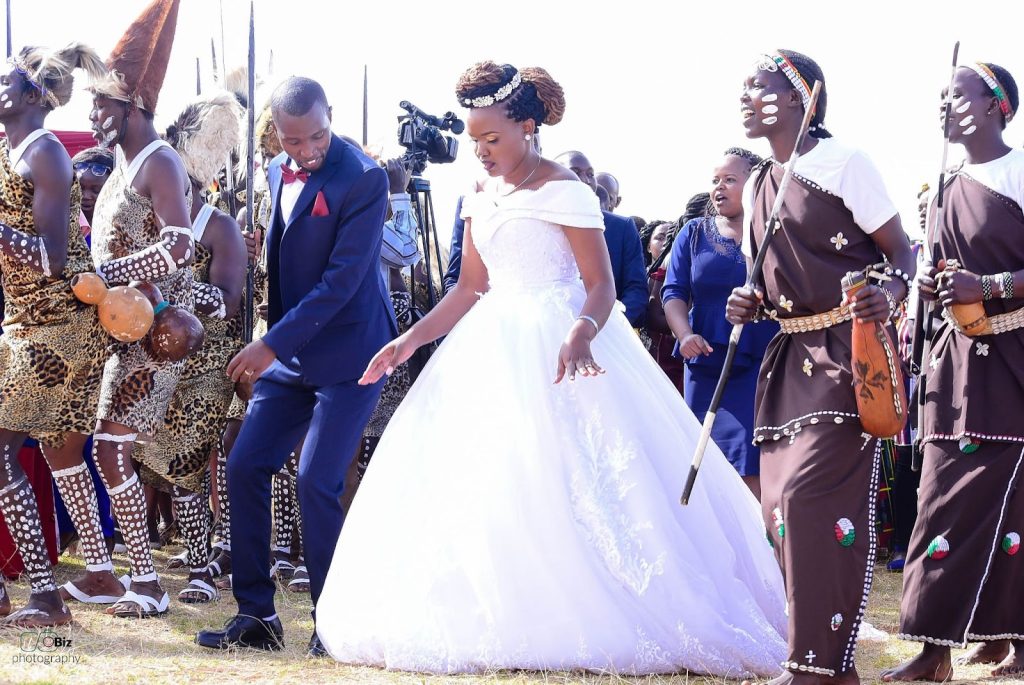I am thrilled by the growing trend among Kenyans to embrace our culture and integrate its rich aspects into our ceremonies, even those traditionally influenced by the West, such as church weddings.
Fun Fact
Did you know that the tradition of brides carrying flowers in white weddings originated as a way to mask any odours from not taking a bath? Haaii, White people abi!
In African communities, there was once a vibrant tradition of celebrating the union of two hearts embarking on a shared life. These celebrations were marked by elaborate feasts and meaningful rituals. For instance, among the Nandi community, the priest would conduct a unique ritual where the couple would shave their hair and mix it together. The priest would then solemnly declare that if the couple ever chose to part ways, each would take their strands of hair.
As if it is possible. Hai!
But it simply means marriage was seen as a commitment. Something about church weddings makes marriage seem like one can leave when they want to. But there is also a general decay in our conduct these days. Everyone is a snake. Not you or me, but everyone else.
This is not a commentary on marriage. Let me get back on track.
A heartwarming trend is taking root: a revival of cultural heritage in wedding celebrations. This trend is not just a passing fad; it’s a beautiful testament to the rich history and traditions that define us. Let me give you a glimpse of a wedding done by a lovely couple from my community, the Nandi people. Known more accurately as Lagook ap Miot/Myoot, the Nandi are deeply rooted in their heritage, tracing their origins back to the ancient Sabeans.
From the outset, this couple was resolute in their intentions. They shared a deep-seated commitment to honouring and promoting the rich tapestry of Nandi culture. This was evident in every aspect of their celebration. Their bridal party, in particular, was a stunning display of this dedication. Through a carefully orchestrated photoshoot, they beautifully captured the essence and beauty of young Nandi girls, embodying grace and elegance of our heritage.
This image is a delightful fusion of modern leso, t-shirts, and accessories, intertwined with traditional elements like the classic gourd, known as sotet, used for storing milk and the renowned Kalenjin delicacy, mursik, along with other liquids such as porridge and herbal medicines. The scene is completed with a tin cup and woven baskets, all typical items found in a Nandi home. It paints an ideal picture of how girls in a Nandi home would relax. Isn’t it beautiful? The background is authentically set in a homestead, showcasing everything in a natural, unforced manner. Nandi beauties.
Glorious Chepchirchir, the bride. At the time this photograph was taken, she was still engaged.
The engagement ceremony was a dazzling affair. While Ankara dresses and shirts are a familiar sight, this time, the bridal party shimmered with the iconic Maasai head jewellery, and other Maasai culture adornments which too are a cherished part of Nandi culture. Attendees were treated to a glimpse of Nandi’s rich fashion and style.
Another touching aspect of the ceremony was the tree-planting session. Trees serve as a beautiful way to commemorate an event, strengthening memories as you nurture the tree. Glorious and her father planted a tree during the engagement ceremony, a thoughtful gesture that will provide a cool, shaded spot for Glorious and her family in the future. I can already picture Glorious and Phil sitting under the tree with their children, reminiscing about their engagement or wedding day, or watching their children play, which is a heartwarming thought. One tree can symbolize so many blessings. In this case, Glorious’ parents were expressing their wishes for her fruitful life, making the tree-planting ceremony even more meaningful. It’s a true reflection of African tradition, incorporating symbolism into everyday life.
The wedding reached a climactic crescendo, perfectly matching the tempo set from the beginning. One notable trait of the Nandi community is their warrior spirit, especially among the men. This strength ensured the flourishing of women and the safety of children. Interestingly, like the Maasai and Kikuyu, the Nandi fiercely resisted slave raiders, thanks to their militaristic nature and pride in defending their community. This aspect of Nandi heritage was vividly displayed by the warrior dancers at the wedding, adding a powerful and authentic touch to the celebration.
Culture is incredibly vibrant. Weddings devoid of cultural elements can feel dull and forgettable. In an era marked by identity crises, infusing our events with culture provides a valuable opportunity for society to understand our collective heritage, fostering a sense of pride and sparking curiosity to delve deeper. I always emphasize that culture should evolve. For instance, wearing skins as clothing today would seem out of place, unless modernized like leather jackets. Let us preserve the positive aspects of our culture that promote celebration and healthy communities.
I commend Glorious and Phillip for this wonderful display of culture. It is truly refreshing.

